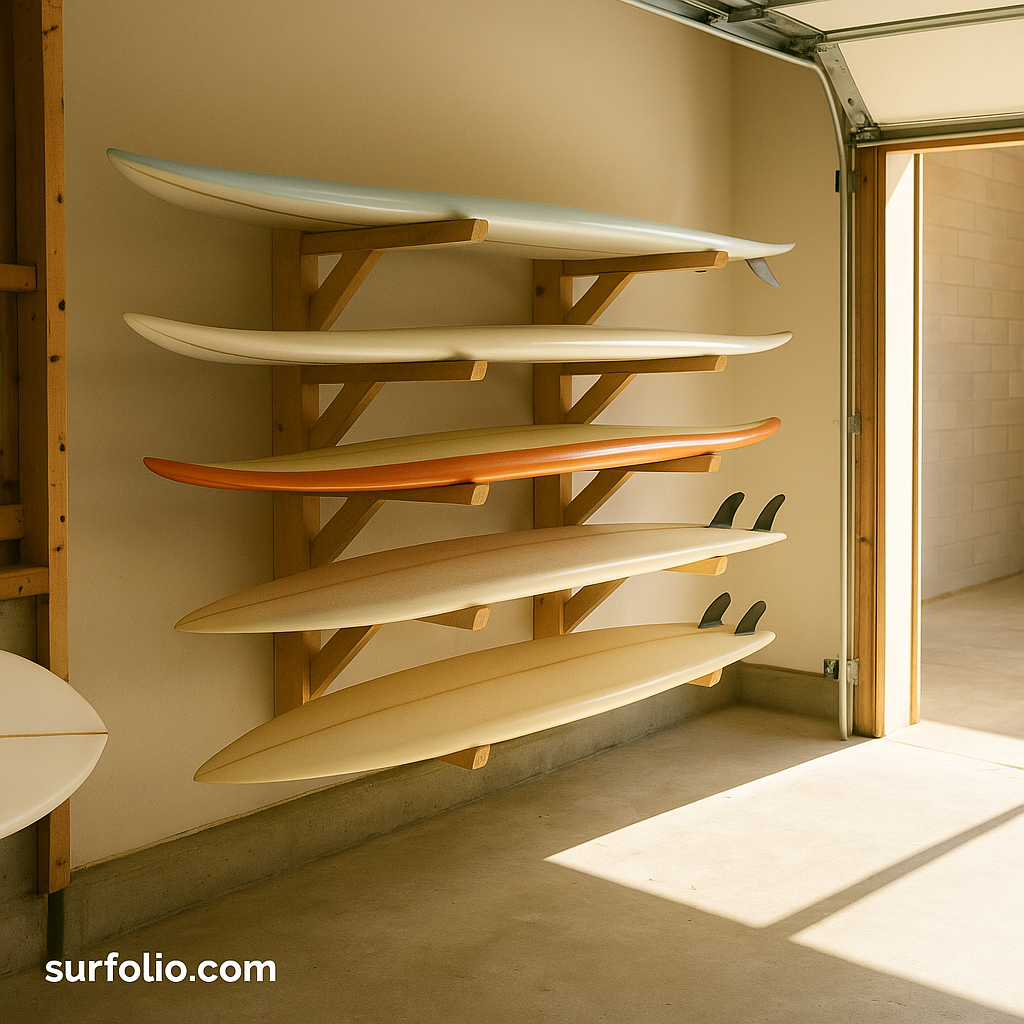
Why Proper Storage Matters
Your surfboard isn’t just gear — it’s your connection to the ocean.
Whether it’s your first foam board or your custom glassed favorite, proper storage protects it from dings, warping, and yellowing over time.
Good storage habits also make your board last longer, keeping it surf-ready for the next swell.
Keep It Cool, Dry, and Out of Direct Sunlight
The biggest threats to a surfboard are heat, UV light, and moisture.
Leaving your board in a hot car or in direct sun can cause:
- Delamination (bubbles under the fiberglass)
- Yellowing or fading
- Soft spots and cracks
Best practice:
Store your board in a cool, shaded spot with good airflow. If indoors, avoid humid corners or areas near heaters.
If you must keep it outdoors, use a reflective board bag or a UV-resistant board sock for extra protection.
Use a Board Bag or Sock
A board bag does more than protect your board while traveling — it’s also perfect for daily storage.
Choose between:
- Board sock: Light protection from dust and UV rays
- Day bag: Padded, zippered cover for daily transport and storage
- Travel bag: Heavy-duty padding with heat-reflective lining
Always store your board clean and dry before zipping it up. Trapped moisture can lead to mildew, especially in humid climates.
Store It Flat or Upright — the Right Way
Horizontal storage:
Lay your board flat on a soft surface like foam pads or a board rack. Avoid placing heavy objects on top — even minor pressure can cause dents over time.
Vertical storage:
If space is tight, stand your board upright with the tail down and a towel underneath to protect the fins. Keep it leaning gently, not pressed hard against a wall.
Avoid:
- Storing boards nose-down
- Hanging from the leash cord (it can stretch or snap)
- Leaving fins bearing weight
If possible, use a wall-mounted surf rack or a ceiling sling to keep your board safe and off the ground.
Rinse Before Storage
Saltwater is corrosive — it can damage both your board and hardware.
Before putting your board away:
- Rinse thoroughly with fresh water.
- Remove wax if storing long-term.
- Let it dry completely before bagging.
This simple rinse extends the life of your surfboard and prevents salt buildup on fins and leash plugs.
Storing Multiple Boards
For quiver owners, organization matters.
Tips:
- Use a multi-board rack to separate boards and prevent pressure dings.
- Store heavier longboards on the bottom and lighter shortboards on top.
- Label bags by size or type for quick access when the swell changes.
A tidy setup keeps your boards protected and easy to grab for any surf condition.
Long-Term Storage
If you’re taking a seasonal break or traveling inland, prep your board for long-term rest:
- Clean and dry it completely
- Remove wax and fins
- Wrap in a padded bag or bubble wrap
- Store in a climate-controlled environment if possible
Never seal a damp board — trapped moisture can cause delamination or mildew.
Final Thoughts
Proper surfboard storage doesn’t have to be complicated.
Keep it clean, cool, and cushioned, and your board will reward you with years of performance.
A well-stored board is always ready for that spontaneous session when the tide turns perfect.
